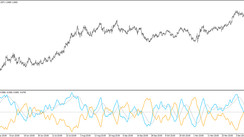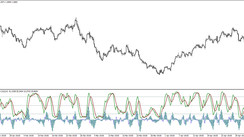Many experts and analysts have come up with many arguments about gold volatility and its falling prices. This argument has woken up the curiosity of many people and has made them ask questions such as; how big is gold on the market? Is gold still valuable? Or maybe, what role does gold play in the financial system?
To obtain these answers, we must analyze the different perspectives that we have and consider how significant is the size of the global gold market.
According to the World Gold Council (WGC), at the end of 2014, the remaining gold reservoirs were determined to be approximately 180,000 tons. Calculating it to the current dollar price, that is equivalent to about 6.3 trillion dollars.
It sounds like a lot. And keeping in mind that gold is a scarce element to find on earth, it should be added that this figure calculated above may underestimate the actual offer. Sure, we should only include a part of that total gold stock as part of the financial market.
Jewellery represents a large percentage of total gold stocks, almost 50%. On the other hand, that number cannot be fully trusted. In other countries like China or India, gold jewellery has a dual purpose, which is ornamentation and storage of wealth.
Even without counting jewellery, the gold investment market remains huge; the market capitalization is between 3 trillion dollars. Moreover, there are specific financial instruments related to gold that are currently available. These instruments include stock funds, futures, derivatives, and more. It is the reason why the size and volume of the gold market must be analyzed in depth.
Market Size
The substantial size of the gold market makes it one of the most readily available and accessible financial assets in the world. The World Economic Council says that the size of the gold market is more significant than any European sovereign debt market and lags only behind US Treasuries and Japanese government bonds.
Therefore, only based on size, the gold market can provide significant safety and liquidity for large reserve portfolios, since it is only exceeded in size by two sovereign debt markets (the United States and Japan).
It follows, then, that gold is the third-largest reserve asset of central banks worldwide behind the only dollar and euro-denominated assets. The financial market for gold is so large that the only markets worth comparing are sovereign debt markets. Since sovereign debt is the asset that balances currencies, ultimately, this means that gold is the reserve asset that is not anyone else's liability.
Market depth and liquidity
The depth of the gold market and its liquidity is almost unmatched. Average gold trading volumes are among the largest of any financial asset, and in most cases, are more extensive than most major sovereign debt markets, excepting only US Treasury bonds.
Furthermore, the gold market is hugely liquid, with very low spreads between buying and selling. The average range in the world OTC gold market is between 0.50 to 0.85 dollars per ounce (0.04% to 0.07% of the price). Again, only the United States Treasury bond market can boast spreads as tight as gold.
All in all, what all these indicators imply is that gold is just as desirable today as it was 20 or 30 years ago. And that will not change anytime soon, especially with the current global crisis.





